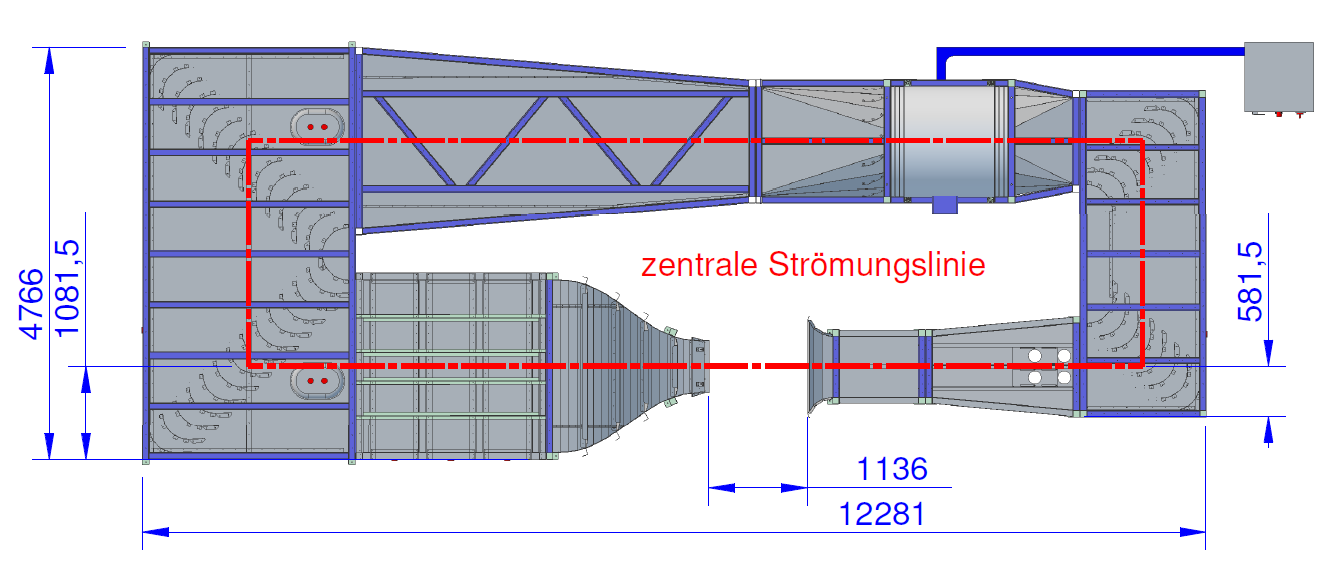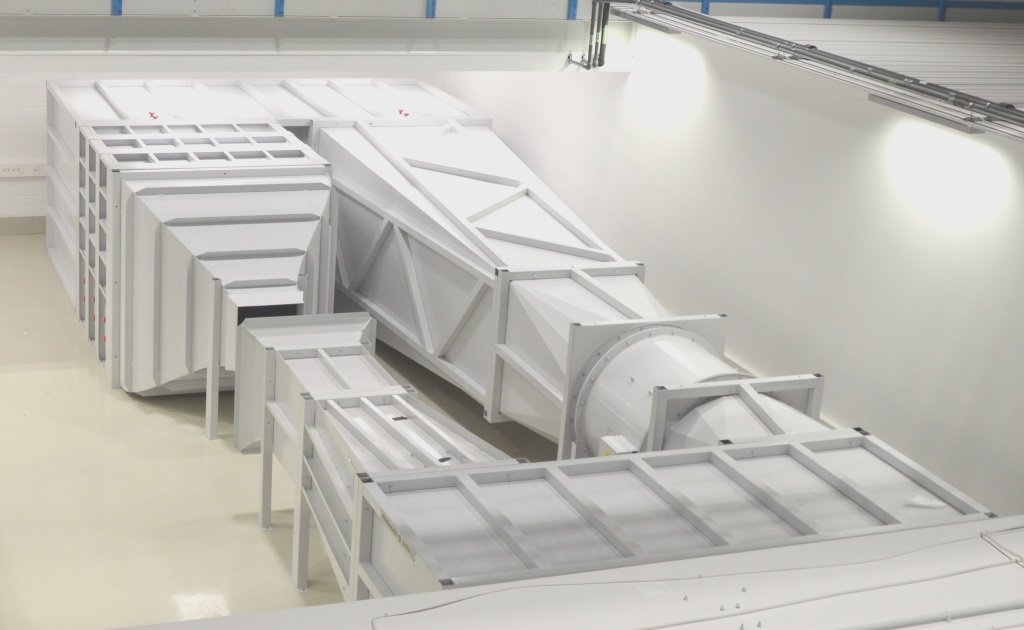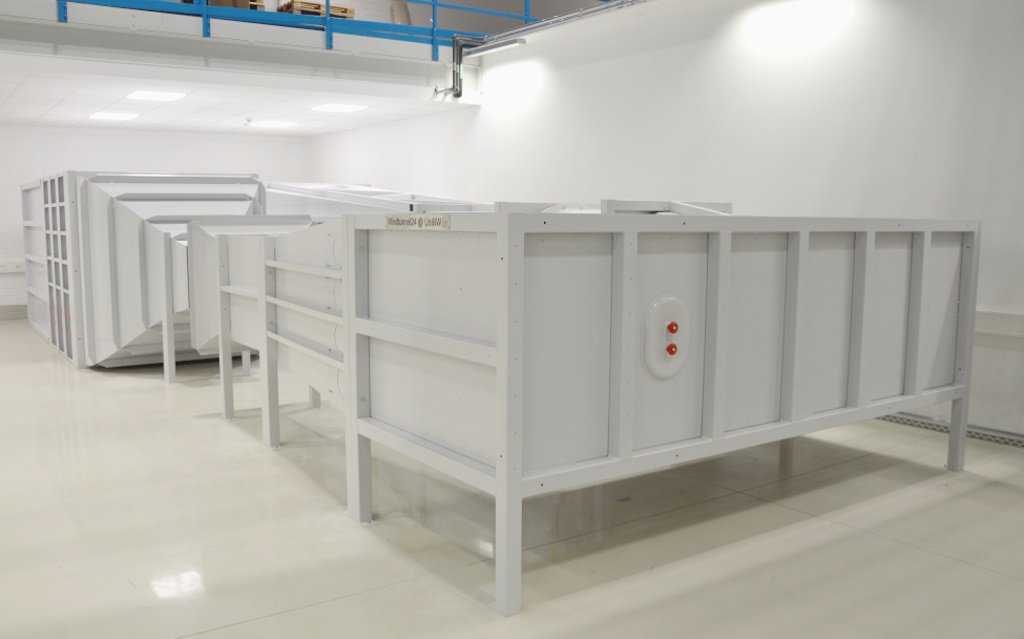Reference project WT298
University of Bundeswehr München
For the University of Bundeswehr in Munich (Contact: Prof. Dr. Markus Dietz) the Windtunnel WT277 was built. The wind tunnel is characterized by a high contraction, the non-expanding corners as well as the long diffuser and the low degree of turbulence.
Highlights
|
Product description
Basic structure
The WT298 consists of a steel profile welded construction and galvanized sheet metal. The additional painting gives the wind tunnel an attractive appearance and is also protected against corrosion. Large manholes in all relevant segments make it easy to enter the inside of the wind tunnel.
Drive
The WT298 is driven by a vibration-decoupled axial fan. The fan, which is mounted on spring shock absorbers, is connected to the wind tunnel via canvas flanges. This ensures low-noise plant operation. The Nanzelle and the guiding vanes are matched to the fan in order to generate a flow with reduced swirl.
Flow preparation
The long diffusers, whose narrow opening angle counteracts flow separation, open into non-expanding corners. The wind tunnel has an extra large sieve chamber. This contains four sieves at an optimal distance from one another. These non-split stainless steel sieves are accessible via inspection flaps for easy cleaning. A honeycomb straightener with a length-to-diameter ratio of 8: 1 further reduces the swirl of the flow. In a nozzle, the nozzle geometry of which corresponds to a polynomial of the fifth order, the flow is prepared and any turbulence that may be present is suppressed.
Measurement
The measurement in the wind tunnel takes place with an open test section. If necessary, the measuring section can be equipped with a wind tunnel scale. The open test section has a flow collecting funnel to reduce the flow losses during the measurement.
Characteristics
| Design type | Closed loop, standing |
| Measuring cross section | 600 x 600 mm |
| Measuring length | 1100 mm |
| Top speed | 52 m/s |
| Turbulence level | 0,40 % |










